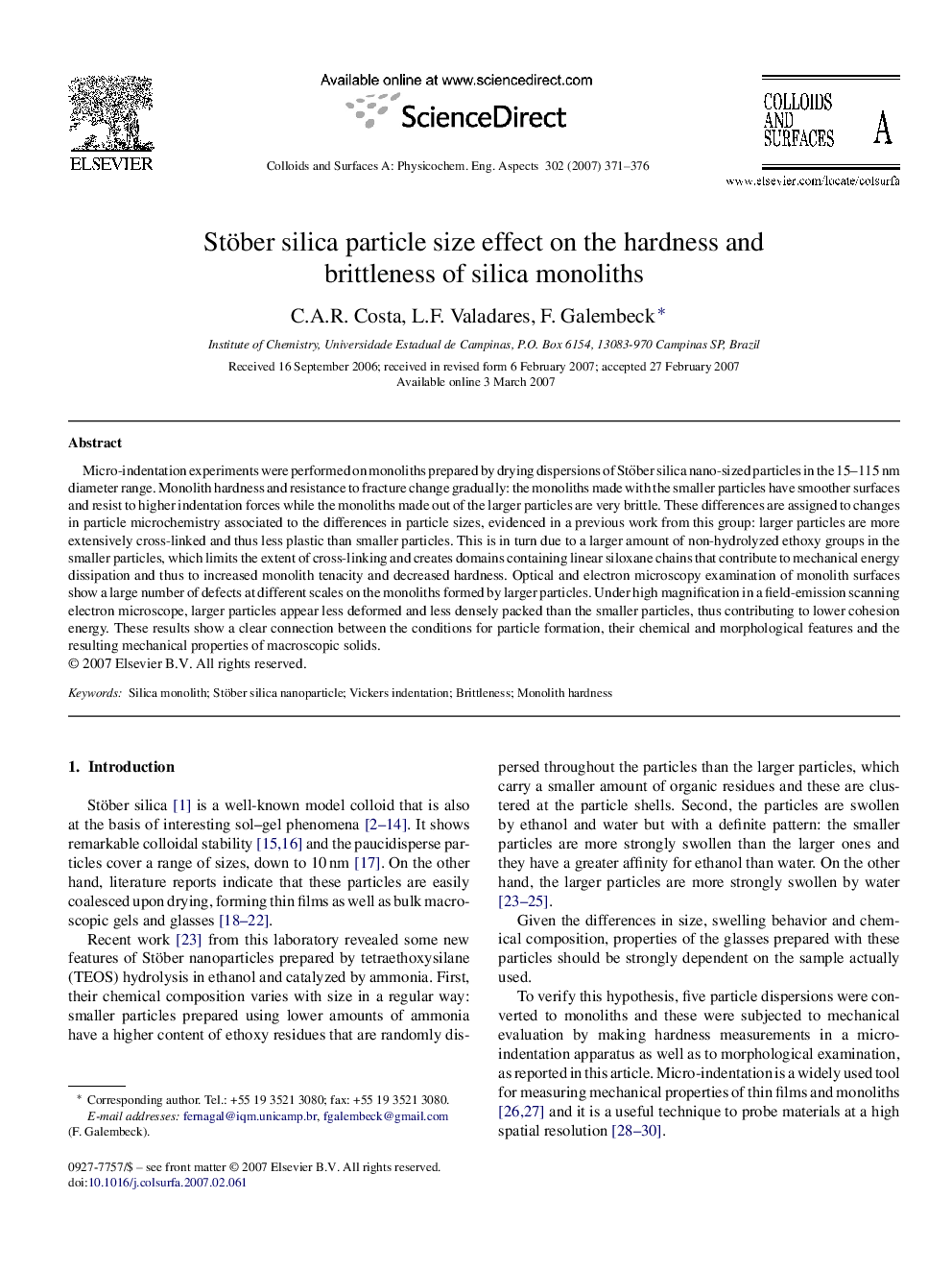| Article ID | Journal | Published Year | Pages | File Type |
|---|---|---|---|---|
| 597414 | Colloids and Surfaces A: Physicochemical and Engineering Aspects | 2007 | 6 Pages |
Micro-indentation experiments were performed on monoliths prepared by drying dispersions of Stöber silica nano-sized particles in the 15–115 nm diameter range. Monolith hardness and resistance to fracture change gradually: the monoliths made with the smaller particles have smoother surfaces and resist to higher indentation forces while the monoliths made out of the larger particles are very brittle. These differences are assigned to changes in particle microchemistry associated to the differences in particle sizes, evidenced in a previous work from this group: larger particles are more extensively cross-linked and thus less plastic than smaller particles. This is in turn due to a larger amount of non-hydrolyzed ethoxy groups in the smaller particles, which limits the extent of cross-linking and creates domains containing linear siloxane chains that contribute to mechanical energy dissipation and thus to increased monolith tenacity and decreased hardness. Optical and electron microscopy examination of monolith surfaces show a large number of defects at different scales on the monoliths formed by larger particles. Under high magnification in a field-emission scanning electron microscope, larger particles appear less deformed and less densely packed than the smaller particles, thus contributing to lower cohesion energy. These results show a clear connection between the conditions for particle formation, their chemical and morphological features and the resulting mechanical properties of macroscopic solids.
